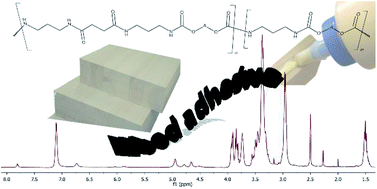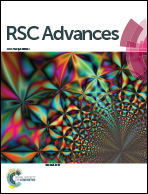Wood adhesive application of poly(hydroxyurethane)s synthesized with a dimethyl succinate-based amide backbone†
Abstract
Non-isocyanate poly(hydroxyurethane)s (PHUs) made by reacting bis(cyclic carbonate)s and amines are important alternatives to conventional polyurethanes. In this work, a series of PHUs was synthesized using a solvent-free, catalyst-free method from bis(2,3-dihydroxypropyl)ether dicarbonate and 1,3-diaminopropane using differing molar ratios of dimethyl succinate to change selected properties of each PHU. The obtained PHUs were characterized by FT-IR, 1H NMR and 13C NMR spectroscopy and their thermal properties and viscosities were determined. We report the use of the obtained PHUs as wood adhesives and the work of adhesion data determined using Owens–Wendt method. The mechanical properties (strength) of different PHU–wood joints were compared. It was found that the addition of dimethyl succinate increases the hydrophobicity of coatings by increasing the water contact angle and decreasing the polar component of the surface free energy of the PHU coatings. PHUs with urethane and amide backbones were stronger than those without.



 Please wait while we load your content...
Please wait while we load your content...